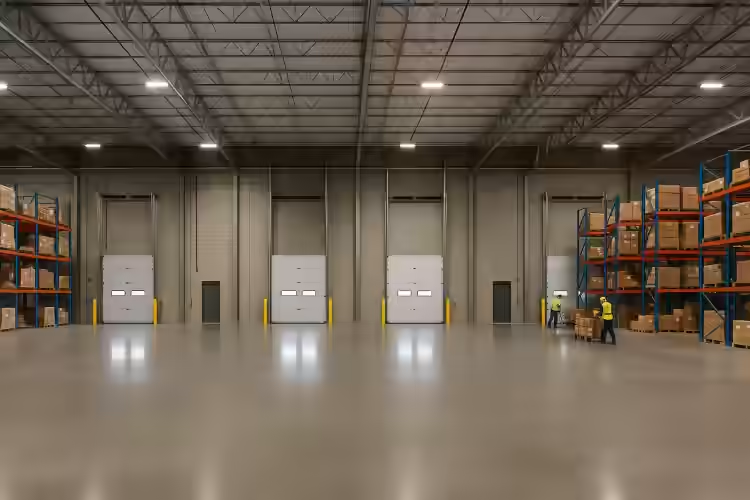The Rise of Multi-Tenant Industrial Facilities
What Is a Multi-Tenant Industrial Facility?
Not every warehouse needs to be a 500,000-square-foot behemoth for a single brand. In fact, many aren’t anymore.
Enter the multi-tenant industrial facility—shared-use warehouses built for flexibility, fast scaling, and smarter resource use. These spaces are often carved into 5,000–50,000 sq ft units (or even smaller), each leased to a different business. Think of it like co-working, but for forklifts and loading docks.
You’ll find:
- 3PLs handling e-commerce fulfillment
- Startups managing inventory pre-retail
- Mid-size brands shipping regional orders
- Light manufacturers or assembly teams
Why They’re Booming Now
Three words: demand, disruption, and flexibility.
E-commerce surge
Post-2020, online orders exploded. Small and mid-size sellers needed warehousing—but couldn’t commit to long-term leases or 100,000 sq ft. Multi-tenant setups gave them an “on-ramp” to scale.
Supply chain uncertainty
From tariffs to shipping delays to random global crises, everyone wants more flexibility. That includes landlords and tenants.
Flexibility over footprint
A growing brand might only need 10,000 sq ft in Denver and 8,000 in Dallas—not a massive national DC. Multi-tenant spaces make this kind of patchwork coverage doable.
Add in rising industrial rents and land scarcity in urban cores, and you’ve got the perfect recipe for shared facilities to thrive.
Who Benefits Most from Multi-Tenant Space?
These setups are tailor-made for businesses in growth mode or managing regional logistics. Some of the biggest winners:
- 3PLs that serve multiple clients and want to reduce dead space
- Online retailers expanding from one fulfillment hub to regional outposts
- Food distributors or last-mile cold chain operators
- Startups or light assembly/manufacturing shops needing loading dock access and scalable square footage
Design Features That Make It Work
Multi-tenant facilities aren’t just sliced-up warehouses. They’re engineered for multiple operations to run in parallel without stepping on each other.
Look for:
- Multiple dock-high and grade-level doors per suite
- Separate utility metering (because nobody wants to split an electric bill)
- 24–32 ft clear heights for vertical storage flexibility
- Column spacing that allows different racking or machinery setups
- Shared but secure common areas—think break rooms, parking, even security booths
Shared Infrastructure: The New Normal
What really sets multi-tenant sites apart is the ecosystem they enable.
You’re not just getting space—you’re buying into a network:
- Shared forklifts or pallet jacks
- Common shipping software or order management tools
- Consolidated shipping pickups from FedEx, UPS, and regional carriers
- Flexible labor pools through on-site staffing agencies
Some platforms even manage the facility for you—so you just plug in your WMS and go. Think of it as logistics-as-a-service.
Location Strategy for Multi-Tenant Sites
You’ll often find multi-tenant warehouses just outside major metros—close enough for same-day delivery, far enough to avoid premium rent.
Hot ZIPs for this model include:
- Ontario, California – Inland Empire's beating heart for 3PLs
- Jersey City, New Jersey – Fast access to NYC without the NYC rent
- Charlotte, North Carolina – Southeast regional boomtown
- Plano, Texas – Dallas adjacency with fast infrastructure
Challenges to Consider
It’s not all smooth sailing. Sharing space means... well, sharing.
- Dock congestion can bottleneck operations if not managed well.
- Noise or contamination from neighboring tenants can impact your workflow—especially in food or clean tech sectors.
- Security is a bigger lift. Shared sites need tighter controls on who comes and goes.
Future Outlook
This isn’t a trend—it’s the future for a big chunk of industrial real estate.
As demand for logistics flexibility grows, expect to see:
- More vertical multi-tenant warehouses in urban cores
- Tech-enabled facilities offering turnkey logistics operations
- Mix-use industrial parks combining warehousing, retail, and even light manufacturing
If you’re planning to lease space or invest in warehousing—whether you’re a landlord, 3PL, or direct tenant—multi-tenant industrial is something you can’t afford to ignore.
Because in a world that values speed, adaptability, and efficiency, the winner isn’t always the biggest player. Sometimes, it’s the one that shares the smartest.

